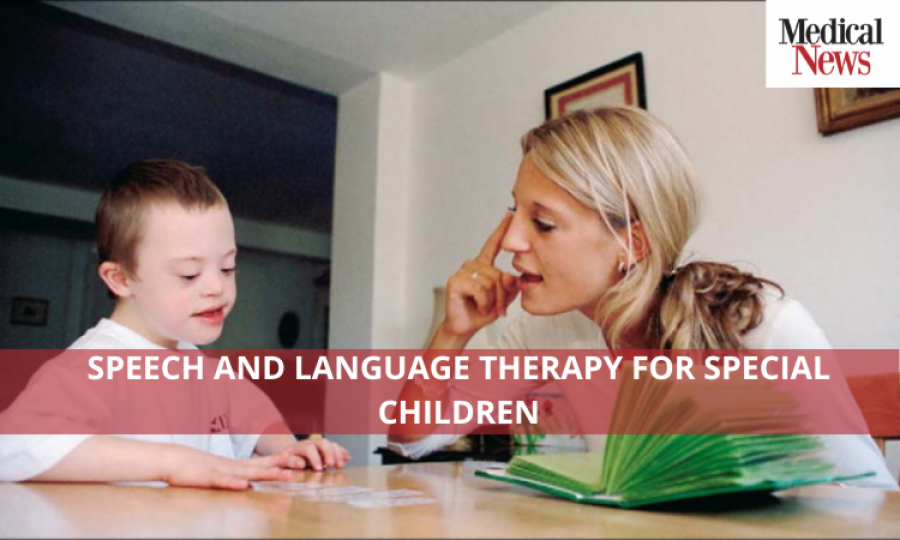Speech and Language Therapy for Special Children

Chromosome abnormalities are at the root of Down syndrome. People with down syndrome has an extra copy for Chromosome 21. A person with Down syndrome has extra genetic material on the third chromosome, which causes a variety of developmental and physical abnormalities.
There is no such thing as an illness associated with Down syndrome. It is thus incurable. Currently, no therapy or surgery can control or cure the illness. Down syndrome offers various health problems, developmental and intellectual obstacles, and medical disorders that need long-term treatment and care. People with Down syndrome are more likely to suffer from many health issues throughout their lives, necessitating ongoing medical evaluation, testing, and treatment.
Children with Down syndrome still need special attention and care. They start talking later in life and have a smaller vocabulary than other youngsters their age. One of the most typical characteristics of children with Down syndrome is difficulty communicating verbally. Children with DS may benefit from early speech and feeding therapy treatments by expanding their vocabulary and linguistic repertoire. Speech-language pathologists (SLPs) are the best choice since they can provide individualized treatment programs for each kid. Therapists can help youngsters with Down syndrome enhance their communication abilities.
Why speech and language therapy is important?
Speech and language therapy for children with Down syndrome may be the most critical component of intervention services if we want to improve their cognitive (mental) and social development.
Children's cognitive growth hinges on developing their speech and language skills. First and foremost, words are a kid's passport to the rest of the world, and the quicker they pick up the language, the more familiar the youngster becomes with the outside world. In other words, a child's ability to speak at five will substantially impact their academic success. The second reason is that language helps us think and reason.
For example, ‘silent speech' is often used to describe the process of thinking, reasoning, and remembering. As a result, a child's capacity to employ these cognitive processes will be hindered if they have significant delays in learning to speak. Most children with Down syndrome will utilize spoken language as their primary mode of communication, even if they are delayed in their development. Children will benefit from using signs in the early years by bridging the gap between signing and speech.
- Every month, the progress of children with Down syndrome should be examined in school, and goals and activities for parents, teachers, and aides should be established.
- For parents and other caregivers to have confidence in allowing their children to undertake these activities, the speech and language therapist should demonstrate them to the child. Speech and language development will not improve until everyday teaching activities and suitable communication styles are increased at home and school.
- Individual or group speech and language therapy sessions with a therapist with the specialized knowledge and skills to address the profile of difficulties with speech and intelligibility that some primary school-aged children with Down syndrome may experience may be necessary for some children with Down syndrome.
The bottom line
Speech therapy may help children, adolescents, and adults with Down syndrome improve their language and communication abilities. When people get speech treatment early in their lives, though, their progress is more apparent.
A person's verbal, grammatical, and articulatory abilities should be taken into account during the course of treatment. As the kid grows and develops new abilities, the procedure should change accordingly. For children with Down syndrome, parents should be a crucial component of any speech therapy plan. You'll learn how to ask open-ended questions, increase the volume and quality of communication at home, use multiple senses to engage your kid, and recognize their own speed as well as the pace of their child.
Trending
Popular
Sindh pledges vigorous action to prevent poliovirus transmission
-
PMA stresses health equity on World ...
04:08 PM, 9 Apr, 2024 -
Dow University’s new rabies vaccine ...
12:18 PM, 28 Mar, 2024 -
IRD role lauded in advancing ...
02:53 PM, 12 Mar, 2024 -
Over one billion people worldwide ...
09:48 AM, 5 Mar, 2024




